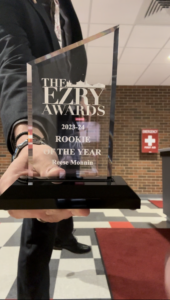Every year, March Madness eats the unprepared and spits them out in favor of the teams ready to go dancing. This year was no different as mid-major stars have taken over the college sports world for the past month. This has created great opportunities for this season and for the future of college basketball.
With the 68 teams entering the tournament, we had no idea what teams would be making noise. The popular picks to win were: Kansas, Michigan State, Virginia, Duke and North Carolina.
However, March Madness is not about who has the best record coming in, nor should it be. It is about what team can go on a magical run to win six or seven games in a row to win the championship. For some teams, it is even more as they have to win their conference to even make it into the tournament.
The UMBC Terriers were one of those teams that fought to win their conference championship just to step foot on the court for the annual competition. For UMBC, it is rare they even made it, so this year was a treat in itself. However, the Terriers were ready to play in the first round. In a notorious game, the 16-seed took down not only the first number one seed to ever fall in the first round, but they took down the number one seeded team in the entire tournament.
While UMBC lost in the round of 32, they are still an inspirational story. Resilience has seemed to be the word for UMBC as they took on a Goliath and came away with the victory. Coaches across the nation will be igniting glimmers of hope in their players at all levels, reminding them that anything is possible if you just believe.
Loyola University Chicago was also one of those teams that came to the tournament ready to play. However, the 11-seeded Loyola Ramblers brought the excitement to the tournament by taking down three teams in a row on final second shots to move to the Elite 8. The team didn’t stop there though, as they took down the Kansas State Wildcats to move to the final four and fell to the University of Michigan.
These teams are not the first to knock off high seeds in the tournament or make long runs, George Mason was another 11-seed that played its way into the final four. However, this tournament, in general, seemed to be the year where you could no longer confidently make a prediction for games.
What this has done for the college basketball landscape is not only to pull in many different viewers, but it may also have completely changed the minds of recruits across the nation. Generally, when athletes are looking to play for a Division I program, they typically look first at whatever program offers them a scholarship and then which program will give them the most exposure.
Typically, the teams that give athletes exposure are those that play on a big platform. For example, the American Athletic Conference holds Louisville, North Carolina, Duke and more. These big conferences—including the Big Ten, which surrounds Wittenberg—are where major players want to go so they can be seen by professional scouts.
However, with teams like Loyola making a deep run in the tournament and the amount of coverage teams receive during March Madness when they win, players can now go to whatever college they feel best fits them. If that means going to the mid-major college that is close to home or going to a college that you feel best fits your needs as an individual, recruits can have a little more confidence in picking a school that is not a historic program. While many recruits will still go to schools that have history or are on the big stage, it opens the door for athletes who want to be different.
This year’s tournament has been highly talked about and has been filled with many amazing games. While the tournament ended on Monday, the teams that made noise will be remembered by all who paid attention to March Madness and gave an opportunity to all the young athletes in the world who want to play at a school that best fits their needs.





